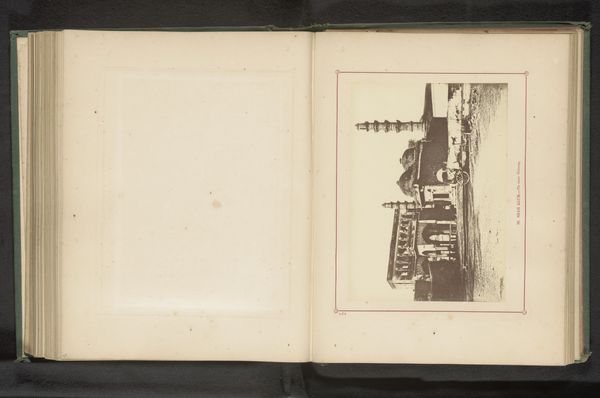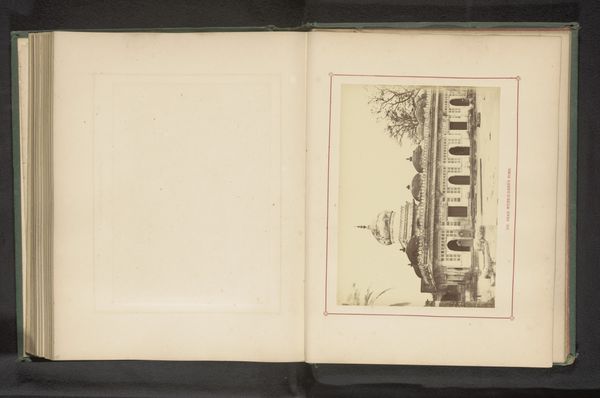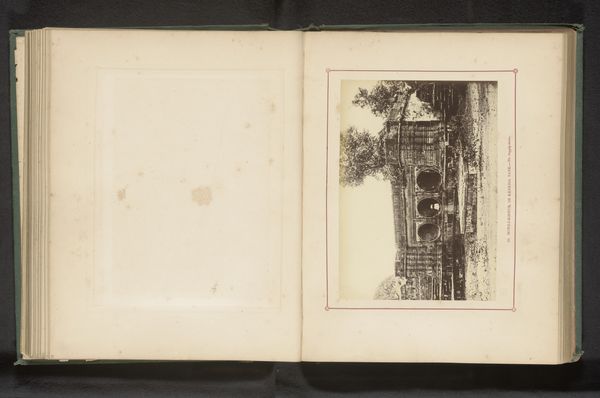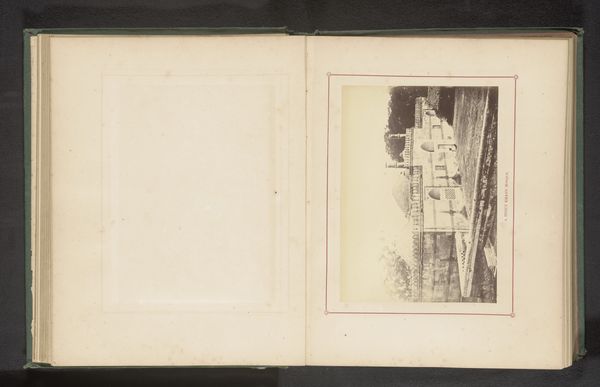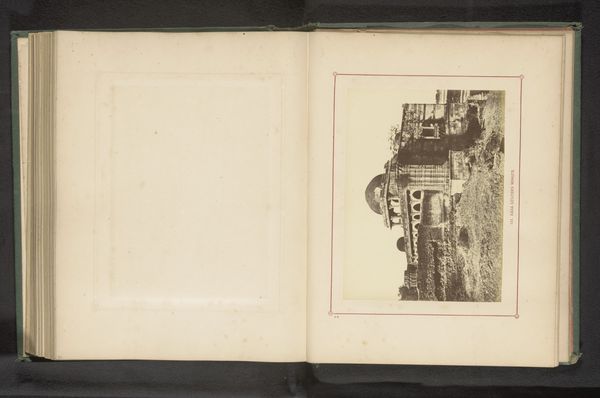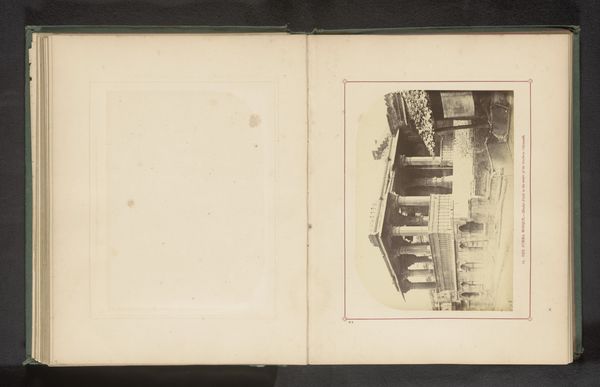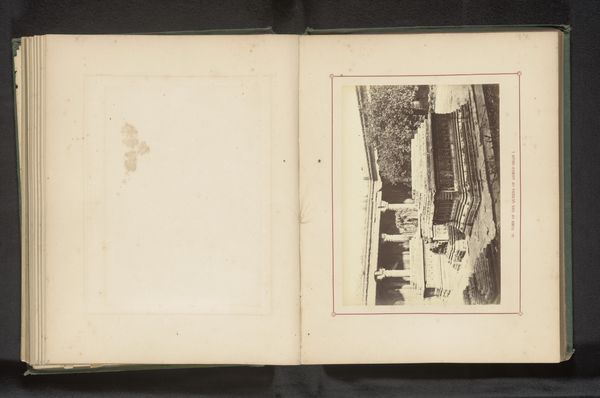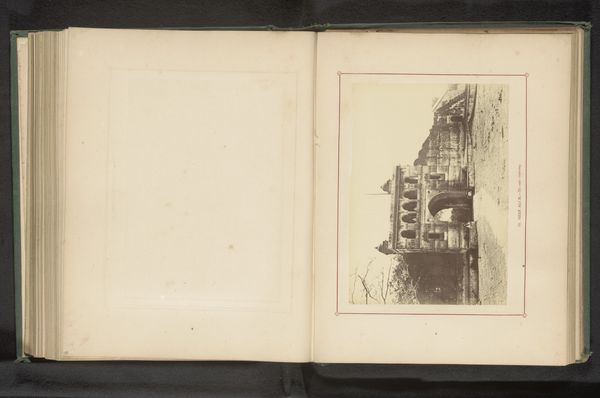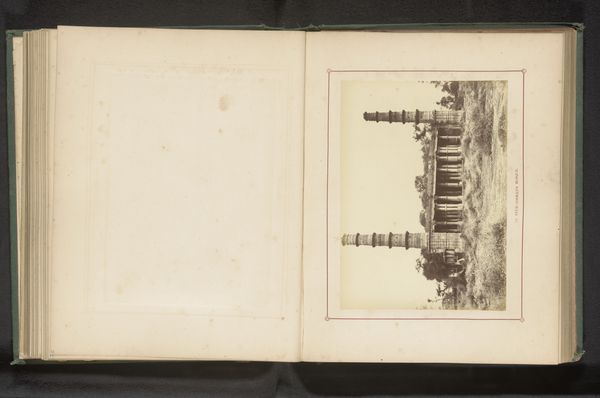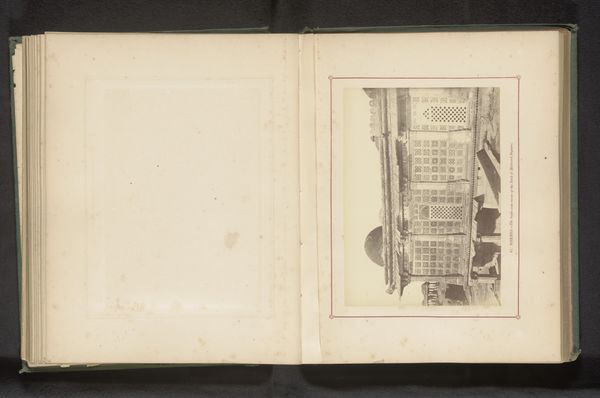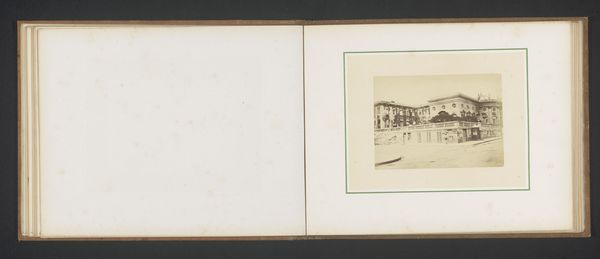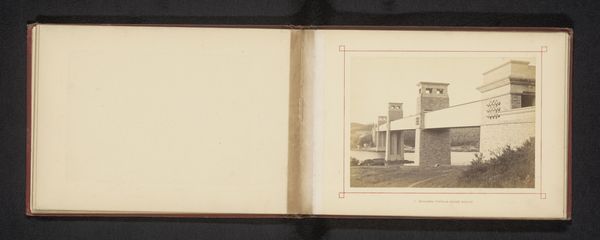
Gezicht op een waterbassin en de ingang van Shah-e-Alam's Roza in Ahmedabad before 1866
0:00
0:00
print, photography
#
aged paper
#
toned paper
#
homemade paper
#
ink paper printed
# print
#
sketch book
#
landscape
#
photography
#
personal sketchbook
#
orientalism
#
pen and pencil
#
sketchbook drawing
#
sketchbook art
#
watercolor
Dimensions: height 142 mm, width 197 mm
Copyright: Rijks Museum: Open Domain
This photograph of the Shah-e-Alam's Roza in Ahmedabad was taken by Thomas Biggs, using the collodion process. Collodion was the first easily scalable method of photography, creating a negative on a glass plate. The process required real expertise, from coating the plate with chemicals to precisely timing its exposure, and Biggs clearly had the skill needed. Photography in this period was often deployed to document the world under imperial control, and this image fits that pattern. Yet the very act of capturing such scenes using specialized methods like collodion also made it into an art form. Consider, for instance, the deep tonality achieved here, and the artist's careful selection of the vantage point. So, while this photograph may seem like a straightforward record, it embodies a complex interplay of science, aesthetics, and imperial ambition. Recognizing the significance of materials, making, and context enables a full appreciation of the artwork, challenging traditional distinctions between fine art and craft.
Comments
No comments
Be the first to comment and join the conversation on the ultimate creative platform.
